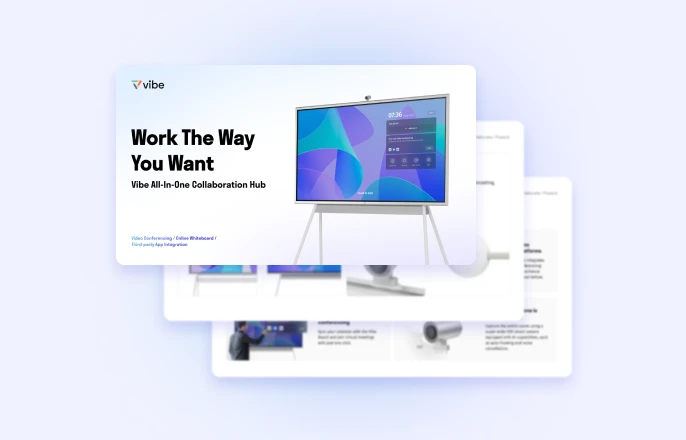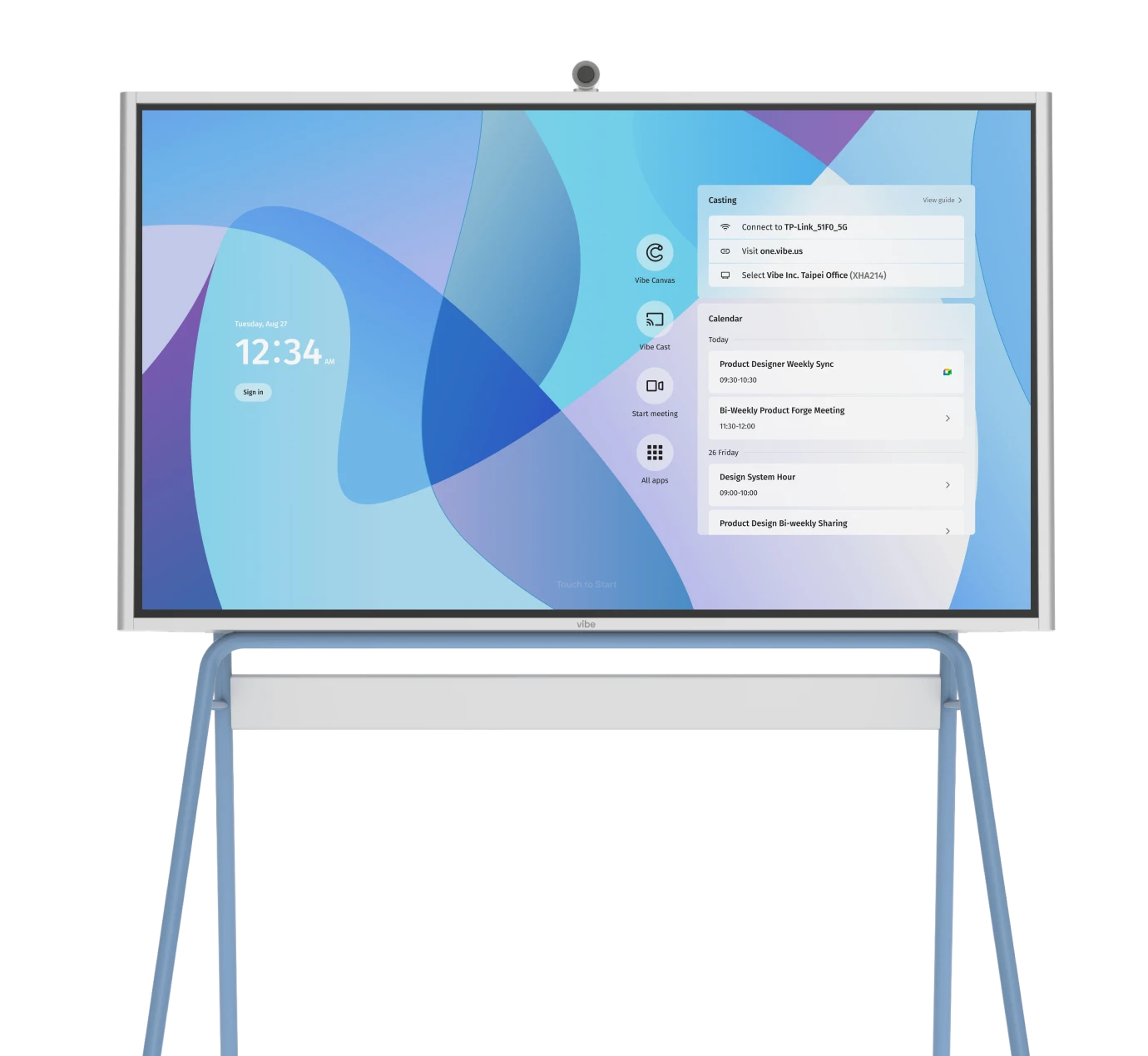Imagine walking out of a sales pitch thinking you nailed it — only to find days later, the prospect barely recalls your key points. That’s not a failure of effort, it’s a failure of memory. Research has shown that when people hear information, they are likely to remember only 10% of it three days later. But when that same message is paired with a relevant image, retention jumps to 65% — proof that how you deliver your message can matter more than what you say.
For sales presenters, this means good visual design isn’t optional. In this guide, you’ll learn why visual storytelling and structure matter, the key principles to prep before you present, 10 creative ways to make your pitch unforgettable, and the presentation tools that can take your delivery from average to extraordinary.
- Audiences remember visuals up to six times better than words alone.
- Sales presentations succeed when design and narrative work together.
- Preparation and audience insight set the stage for confidence.
- Visual storytelling transforms facts into memorable value.
- The right presentation tools make collaboration and delivery seamless.
Why Presentation Design & Delivery Matter
Even the strongest message can fall flat if it’s not presented effectively. The gap between what you say and what your audience remembers is surprisingly wide — again, people retain only about 10% of spoken information after three days, but when visuals reinforce your message, retention can soar to 65%. Clear visuals, consistent branding, and a strong narrative structure give your audience anchors to recall your key points long after the meeting ends. On the flip side, cluttered slides, inconsistent pacing, or monotone delivery can derail even the most compelling presentation.
Core Principles to Know Before You Begin
Before you start crafting a visual presentation, here are a few important ideas to keep in mind:
Know your audience & pain points
Every successful presentation starts with understanding who you’re talking to and what matters most to them. Pre-presentation research should cover the company’s goals, industry trends, and each stakeholder’s role in the decision-making process. Tailor your opening to reference a mutual connection or challenge. Do audience research by identifying their job roles, goals, and top challenges — it’s the foundation of effective team dynamics.
Structure & flow
A winning presentation follows a logical narrative that keeps your audience engaged from start to finish: Hook → Problem → Impact → Solution → Proof → Objections → CTA → Q&A. Create a one-slide agenda at the start of your deck that outlines each major section to guide your audience’s expectations.
Focus on value, not features
Buyers don’t just want to know what your product does — they want to know why it matters. Always answer the "so what?" by connecting features to tangible benefits like time saved, revenue growth, or reduced costs. Replace three feature bullets in your existing deck with "How this helps you…" statements to make the value crystal clear.
Use data and social proof
Data builds credibility, while customer stories make it relatable. Strengthen your claims with benchmarks, case studies, and testimonials that show real-world impact. Add one concise customer quote with a specific metric (e.g., "cut onboarding time by 70%") to any slide presenting your solution.
Iterate early & test
Run internal reviews, rehearse your flow, and gather peer feedback to catch weak spots before the real pitch. Schedule a mock presentation with a peer or a high performing team lead 48 hours before your real pitch to collect feedback and fine-tune delivery.

10 Sales Presentation Ideas You Can Use Today
If you’re looking for great ideas to make your own sales presentations, take these ideas.
1. Before‑After‑Bridge Storytelling
Start by painting the "before" — your prospect’s current pain or inefficiency. Then, reveal the "after" — what success looks like when their problem is solved. Finally, connect the two with the "bridge" — your product or solution. This narrative arc builds both emotional resonance and logical clarity.
Best for: Early-stage pitches or discovery meetings where you want to make a strong emotional connection to a business problem.
2. Interactive Polls or Live Questions
Turn your audience from passive listeners into active participants. Use polling tools or quick question slides to spark conversation and gauge interest in real time. Their responses can guide your focus, and make your pitch dynamic.
Best for: Mid-size to large group virtual presentations where interaction might otherwise be low.

3. Embedded Short Video or Animation Media
A 30- to 60-second video can communicate a transformation faster than words alone. Whether it’s a customer success montage or a short product animation, motion helps clarify complex concepts and evoke emotion. This tactic works especially well for showing before-and-after outcomes or technical processes.
Best for: Tech, software, or logistics solutions that benefit from visual explanation.
4. Use Physical Props or Analogies
A tangible object can turn an abstract concept into something memorable. For example, use a broken pipe to represent system inefficiencies or a chain to symbolize connected workflows. Visual metaphors stick — and props add a layer of surprise.
Best for: In-person presentations or trade shows where physical interaction adds impact. (Or consider a smart board for the office to create a dynamic digital prop.)
5. Clickable or Branching Slides (Non‑linear Paths)
Give your audience control by letting them choose what to explore next. Clickable or branching slides make your presentation flexible and audience-driven, so you can adapt in real time. It’s a great way to prioritize what matters most to different roles in the room.
Best for: Decision-maker group meetings with multiple stakeholders and interests.
6. Live Product or Feature Demo (Mini Version)
A short, focused demo brings your value to life. Highlight one key use case in one or two minutes, and if possible, let the prospect interact with the product themselves. That firsthand experience reinforces confidence and makes the pitch tangible.
Best for: Mid- to late-funnel presentations, especially in product-led sales environments.
7. Infographics and Data Visualizations
Complex data can lose attention fast — but visuals make it digestible. Infographics and charts simplify performance metrics, trends, or ROI numbers into visual proof points. The result is your data tells a story instead of overwhelming your audience.
Best for: Finance-focused discussions or any presentation where ROI and performance data drive decisions.
8. Narrative Customer Success Stories
Share a brief, story-driven case study that mirrors your prospect’s situation: Challenge → Action → Result. Include real visuals like customer photos, brand logos, or graphs of measurable success. These narratives humanize your pitch and build credibility fast.
Best for: Later-stage meetings where reassurance and social proof are key.
9. Interactive Whiteboarding or Annotation on Slides
Instead of just showing slides, work through them. Use annotation tools or digital whiteboards to sketch, circle, or emphasize key points in real time. This keeps attention high and helps clarify complex ideas.
Best for: Virtual presentations or strategy sessions where engagement and collaboration matter most.
10. "What If" Scenario Modeling
Show prospects what happens with your solution — and without it. Use side-by-side comparisons or an ROI calculator to make the cost of inaction tangible. When you quantify potential outcomes, your message shifts from "nice to have" to "must have."
Best for: Procurement or finance-minded audiences who need clear, data-backed justification for investment.
5 Slide Design Mistakes That Kill Sales Presentations
Even the most persuasive sales story can lose its impact when buried under poor design choices. Great slides should enhance your message, not compete with it. Avoid these common design mistakes to keep your audience focused, engaged, and ready to act.
-
Cramming too much on one slide. Audiences can get overwhelmed and tune out, so focus on one idea per slide. Break long points into a series of simple, digestible visuals.
-
Using generic or off-brand images. Stock photos feel impersonal and reduce trust. Instead, use screenshots, real product visuals, or custom graphics that align with your brand’s voice and style.
-
Tiny fonts and cluttered layouts. If it’s hard to read, it won’t be remembered. Use large fonts (30pt+), clean layouts, and plenty of white space to guide attention.
-
Inconsistent visual style. Mismatched colors, fonts, and icons make your deck look unpolished and distract from your message. To avoid this, create or stick to a single branded slide template with consistent typography, color palette, and iconography.
-
Meaningless animation overload. Excessive motion distracts instead of clarifying. Use subtle animations only when they help explain a transition, emphasize a key point, or direct focus intentionally.
Sales-Specific Delivery Techniques
If you want to make your sales presentation as good as it can be, here are a few tips that will help you.
Rehearse With Purpose
A confident delivery starts long before the presentation. Practice your timing, transitions, and body language so you sound natural rather than rehearsed. Record yourself and critique the flow to spot pacing or clarity issues.
Sales tip: Rehearse pricing delivery slowly — pause after quoting ROI or cost savings to let the value sink in.
Present Conversationally (Avoid Reading Slides or Scripts)
Slides are visual cues, not scripts. Speak conversationally, using pauses, rhetorical questions, and vocal variation to sound authentic and keep attention.
Sales tip: Frame features as if you’re chatting one-on-one — especially effective in discovery calls where rapport matters most.
Frequently Read Audience Signals and Adapt
Your audience’s reactions are your best real-time feedback. Watch for shifts in tone, attention, or body language, and adjust accordingly — skip ahead, elaborate, or recap as needed.
Sales tip: If procurement looks disengaged during pricing, pivot to ROI examples or value comparisons to re-engage them.
Encourage Dialogue Early and Often
Engagement drives buy-in. Ask open-ended questions and schedule mini Q&A breaks to make the pitch interactive.
Sales tip: Try using prompts like "How does this compare to your current process?" to spark discussion and uncover hidden objections.
Use Small Gestures to Boost Connection
Authentic connection often comes through the small details. Maintain steady eye contact (or look directly into the camera virtually), use your audience’s names, and weave in light humor to keep your audience engaged.
Sales tip: When sharing pricing or key terms, make eye contact with the budget holder to project confidence and trustworthiness.

Present Smarter, Not Harder, with Vibe Board S1
All of these presentation techniques are more powerful when delivered on the right platform — and that’s where the Vibe Smart Whiteboard comes in. Vibe transforms sales presentations into interactive, collaborative experiences with its whiteboarding canvas where you can annotate directly on slides, images, and apps. With multi-touch support and a magnetic stylus, presenters can sketch workflows or demo features naturally, while screencasting from any device keeps the flow uninterrupted. The built-in AI-powered camera and mic array ensure every virtual pitch looks and sounds professional. Plus, Vibe integrates with 250+ apps like Google Workspace, Microsoft Office, and Zoom.
If you’re ready to make your sales presentations unforgettable, request a demo and see how Vibe helps you present.
Discover how Vibe helps this financial advisor get more high-net-worth clients with interactive presentations.
Sales Presentation Ideas FAQs
How to make a great sales presentation?
Start with a compelling hook that ties directly to your prospect’s pain point. Structure your story logically — Hook → Problem → Impact → Solution → Proof → CTA — to guide your audience through a clear narrative. Use visuals, storytelling, and live interaction to hold attention, and close with a decisive next step that reinforces your value proposition.
What is the 10‑20‑30 rule for presentation skills?
The 10-20-30 rule, created by Guy Kawasaki, is a simple formula for keeping presentations focused and effective: 10 slides maximum, 20 minutes of speaking, and 30-point font minimum for readability. It encourages presenters to simplify their message and respect the audience’s time.
What are some good presentation ideas?
Use before/after storytelling to illustrate transformation and value. Add live polls, short videos, or interactive annotations to make your presentation dynamic and memorable. Incorporate customer success stories or case studies to add credibility and help prospects visualize real-world outcomes.
What is the best sales presentation?
The best presentations feel personalized, conversational, and goal-aligned. They combine strong visuals, meaningful data, and a clear call to action — all centered on the prospect’s priorities. Instead of a one-way pitch, great sales presentations invite dialogue, anticipate objections, and leave the audience confident about next steps.









-1sbltxxq4FYxHrXrwJVLsCDNsXpqNa.webp)
-5Zp0pmSytvcuYDVs1LvuwplKuRneK0.webp)
